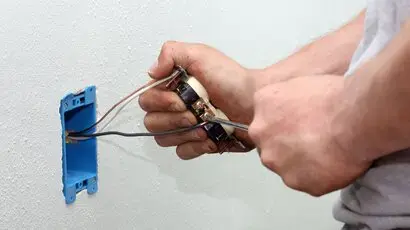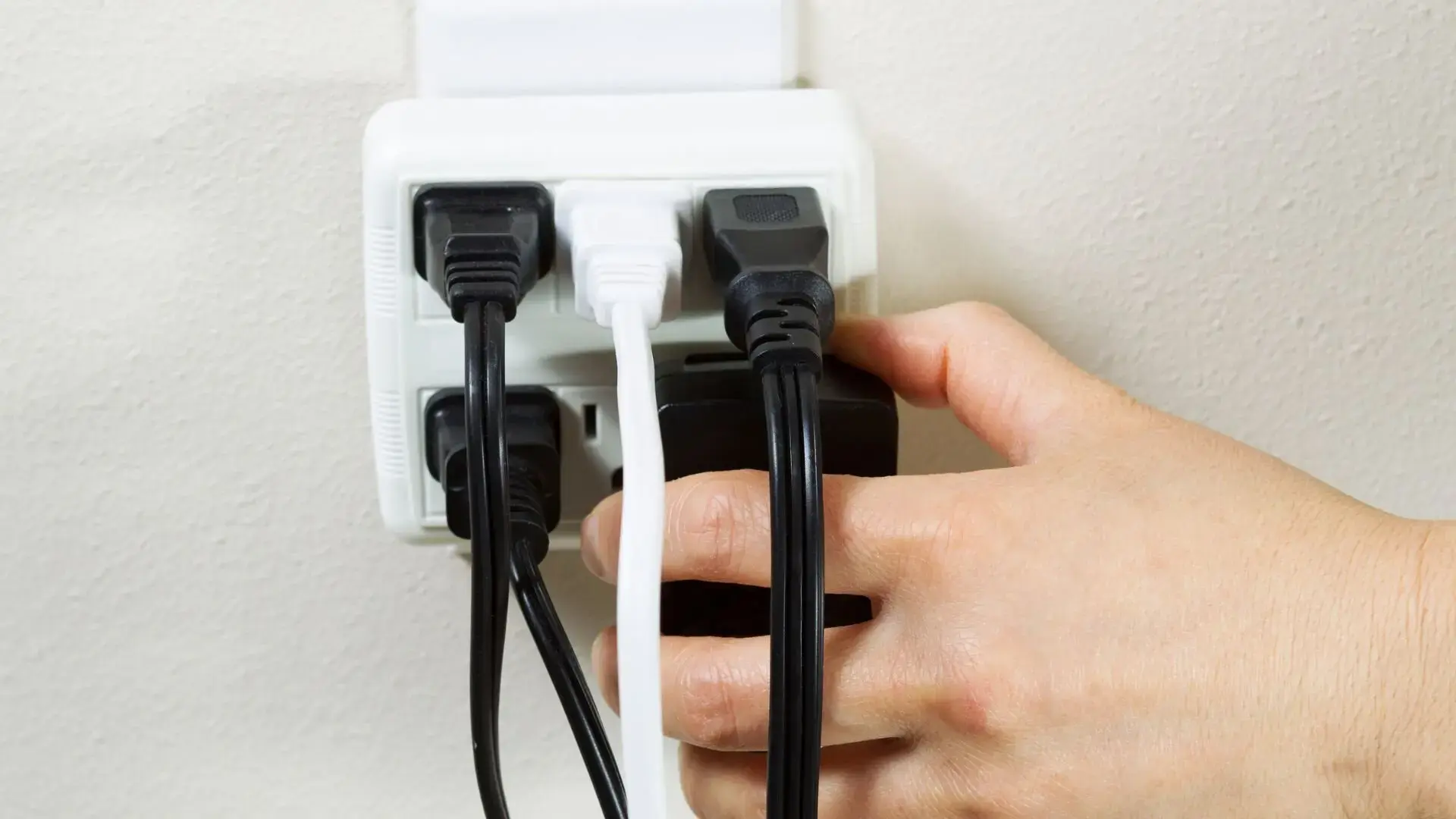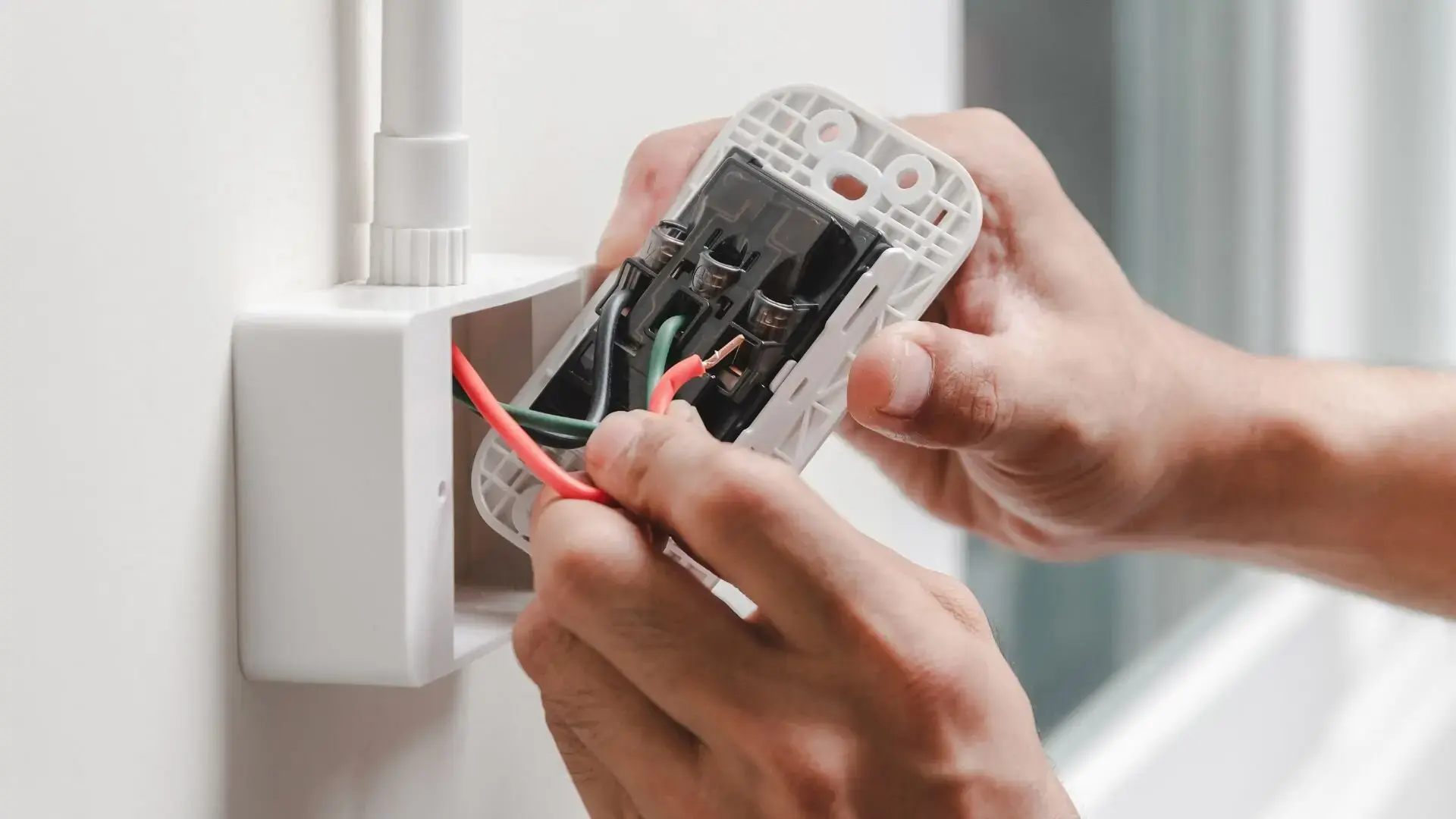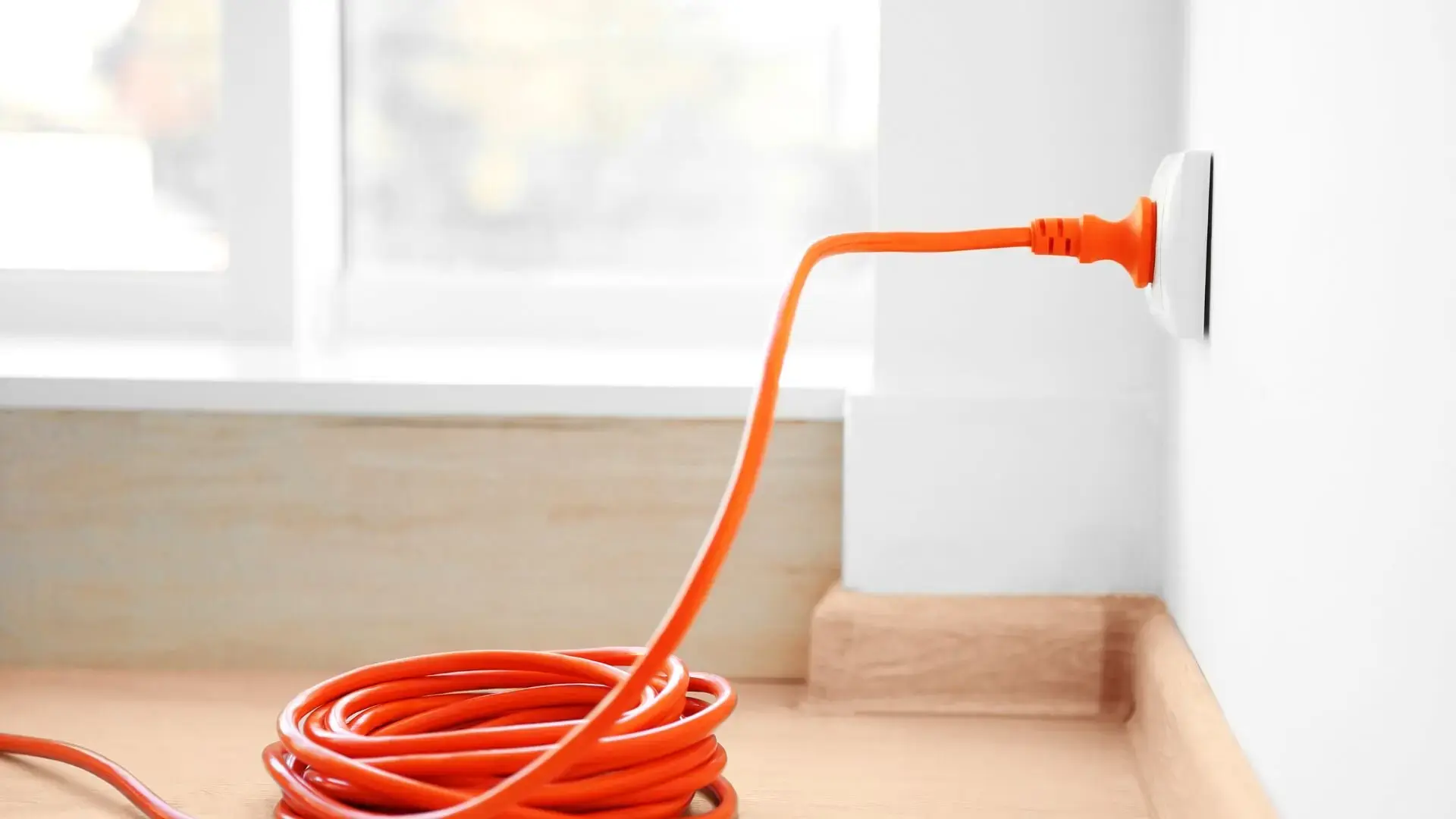
Get your free Melbourne Electrician quote today!
Our team of Melbourne Electricians is here to help you with any questions or concerns you may have. We’re committed to providing you with the best possible service and support.
GFCI outlets are a crucial component of electrical safety in any home. Learn where these devices are mandatory according to Australian Standards, how they work to prevent shocks, and how to ensure they’re functioning properly. Keep your home safe and up to code with our in-depth look at GFCI outlet requirements.
Ever spotted outlets in your home with those mysterious test and reset buttons? Those are GFCI outlets, and they’re there for a crucial reason: saving lives! But with GFCI outlets scattered around your house, you might wonder where they’re really needed.
In this blog, we’ll take you through the essential spots in your home where GFCI outlets should be installed to keep electrical safety top-notch. We’ll point out the vital areas, explaining why having GFCI protection there is so important. By the time you finish reading, you’ll be able to identify where to prioritise GFCI outlets for the best protection against electrical shocks at home.
What is a GFCI Outlet, and Why is it Important?
A Ground Fault Circuit Interrupter (GFCI) outlet is a key player in preventing electrical shocks and fires in homes and businesses. These outlets detect ground faults, where electricity dangerously veers off its path. The Australian Standards and Wiring Rules (AS/NZS 3000), guiding safe electrical installations, advise using GFCI outlets in various spots around homes and buildings.
If you drop a kettle into a sink full of water, a GFCI outlet will sense the electrical imbalance and swiftly cut off the power, averting potential harm. These outlets are essential, especially in wet areas like kitchens and bathrooms, where the risk of electrical accidents is higher. AS/NZS 3000 recommends GFCI protection in these areas to minimise the risk of shock.
GFCI outlets can be installed in new construction or retrofitted into existing electrical systems. When upgrading your electrical system, consult a qualified electrician to ensure proper installation.
Remember, a GFCI outlet acts like a vigilant lifeguard for your electrical system, constantly monitoring and ready to react in milliseconds to keep you safe from electrical mishaps. The new Australian Standards and Wiring Rules (AS/NZS 3000) emphasise the importance of GFCI outlets for overall electrical safety. While regular circuit breakers protect against overloads, GFCI outlets provide a vital layer of defence against ground faults and potential shocks.
How Does a GFCI Outlet Work?
Ever wonder how those GFCI outlets, with their test and reset buttons, function differently from standard ones? The answer lies in their built-in guardian—the ground fault circuit interrupter (GFCI). This clever device provides superior protection against electrical shock by constantly monitoring the flow of electricity within the circuit.
Imagine electricity as water flowing through pipes. In a properly functioning circuit, the current leaving the outlet (hot wire) should return precisely through the neutral wire. Any deviation from this balance signals a ground fault. This could occur due to a faulty appliance or water making contact with live wires, creating a dangerous situation.
GFCI reacts swiftly, severing the circuit within milliseconds. This rapid shutoff prevents a dangerous amount of electricity from flowing through you, safeguarding you from potential shock.
Wondering how to make sure your home is fitted with these vital safeguards? The best course of action is to reach out to a qualified electrician. They can evaluate your wiring and suggest more GFCI outlets if needed. Don’t forget, GFCI outlets aren’t just for new builds. You can also install them in existing homes to boost safety.
But your role doesn’t end there. It’s crucial to test your GFCI outlets regularly, typically every three months. Press the test button – the device should trip and cut off power. Then, press the reset button to restore the function. This simple test ensures your GFCI outlet is functioning correctly.
Locations Requiring GFCI Outlets

While the National Electrical Code (NEC) is used in the United States, Australia has its own electrical safety regulations. Here’s a breakdown of locations requiring GFCI outlets according to Australian Standards:
Mandatory Locations for GFCI Outlets (AS/NZS 3000:2018 Wiring Rules):
- Bathrooms: All powerrpoint outlets within 1.2 metres of any basin, bath, shower, or spa bath.
- Ensuite Laundry Rooms: All powerpoint outlets in combined bathroom and laundry areas.
- Kitchens: All powerpoint outlets within 0.4 metres of any sink or benchtop.
- Laundry Rooms (Separate): All powerpoint outlets in laundry rooms, including those for washing machines and any additional outlets near sinks.
- Swimming Pool and Spa Areas: All powerpoint outlets servicing or located within 2 metres of a swimming pool or spa pool.
- Outdoor Areas: All powerpoint outlets are located outdoors, including patios, decks, balconies, and verandas.
- Other Wet Locations: Any other area with a powerpoint outlet exposed to moisture or potential water contact, such as unfinished attics, workshops with exposed pipes, or garages with sinks.
Recommendations for Additional GFCI Protection
- Areas with Potential Water Spills: Consider GFCI outlets near refrigerators with ice dispensers and utility sinks in garages or workshops with frequent water use.
- Caravan Parks and Camping Sites: Portable RCD (Residual Current Device) protection is recommended for caravan park power supplies and camping sites.
Important Considerations
- Refer to the current AS/NZS 3000 Wiring Rules for the most up-to-date regulations.
- Consult a licensed electrician for GFCI outlet installation or to assess your specific electrical needs.
- Regularly test your GFCI outlets following the manufacturer’s instructions.
GFCI Installation Requirements and Building Codes
In Australia, Ground Fault Circuit Interrupter (GFCI) outlets, known locally as Residual Current Devices (RCDs), are crucial for preventing electrical shocks. These devices are essential in areas where there’s a risk of water contact, such as kitchens, bathrooms, and outdoors. They work by swiftly cutting off the flow of electricity if a ground fault is detected, significantly enhancing safety.
Electrical safety regulations in Australia, outlined in the AS/NZS 3000 Wiring Rules, differ from the National Electrical Code (NEC) used in the United States. Similar to NEC requirements for GFCI protection, Australian regulations mandate the use of Residual Current Devices (RCDs) in specific locations. These regulations apply to all new dwellings built after 2000, requiring RCD protection for all power circuits to ensure overall safety against leakage currents. Additionally, when renovating areas like bathrooms, kitchens, laundries, or outdoor spaces or upgrading electrical systems in older homes, RCD protection becomes mandatory for those specific circuits. This ensures essential safety measures are in place for areas with potential water contact.
If you’re considering installing an RCD in a rental property, home, or office, consult with licensed electricians or local authorities to ensure your setup meets the latest safety codes. This proactive approach helps safeguard your home and its occupants from potential electrical hazards.
How to Install a New GFCI Outlet in a Laundry Room
Gather a screwdriver, wire cutters, wire strippers, a voltage tester, and your new GFCI outlet. Ready to dive in? Start by turning off the power at your main electrical panel to steer clear of any unexpected shocks. Remove the old outlet, if there’s one, by unscrewing the cover plate and gently pulling it out of the electrical box. Always use your voltage tester to double-check that the power is truly off.

Connect the wires to the GFCI outlet as per the manufacturer’s instructions. Once connected, carefully push the GFCI outlet into the electrical box and secure it with screws.
Typically, the black hot wire goes to the brass screw, the white neutral wire to the silver screw, and the green or bare (ground) wire to the green screw.
Now, replace the cover plate, turn the power back on, and test your new GFCI outlet. Press the “Test” button, and it should trip, cutting off power. Then press “Reset”, and the outlet should function normally. If it’s working correctly, give yourself a pat on the back. You’ve just made your laundry room safer!
New construction electrical codes typically require GFCI outlets in laundry rooms, even if there’s no sink present. This is because of the potential for water splashing or flooding.
Testing and Maintaining GFCI Outlets in Your Home
It’s crucial to keep your GFCI outlets or RCDs in prime condition. By regularly testing and maintaining them, you ensure they’re set to leap into action when necessary. Want to know how to test a GFCI outlet? Simply press the “Test” button. If the ‘Reset’ button pops out, it’s working fine. A good rule of thumb is to check your GFCI outlets monthly to make sure they’re in top shape.
Maintaining your GFCI outlets isn’t rocket science, either. Avoid overloading the circuit with too many appliances, keep them safe from physical damage, and replace them if they fail during testing. Remember, a well-maintained GFCI outlet is your first line of defence against electrical hazards.
But what if they’re faulty? Here are some signs to watch out for. Remember, a faulty GFCI outlet can compromise your safety.
- It could be a red flag if your GFCI outlet doesn’t reset after tripping.
- Another tell-tale sign is when the outlet isn’t powering your appliances or devices. This could be due to a tripped GFCI breaker instead of a faulty outlet, but it’s always best to consult a qualified electrician to diagnose the problem.

Stay Safe with Ground Fault Protection: Let WP Electrical Help!
Now that you know GFCI outlets are essential in places like bathrooms, kitchens near water sources, garages, laundry rooms, and outdoor areas, it’s important to make sure your home’s electrical system is up to code. Although GFCI circuit breakers offer some protection, individual GFCI receptacles provide the most thorough ground fault protection. They act as life-saving safeguards, cutting off electricity almost instantly if a current leak is detected, preventing serious shocks or electrocution.
If you’re unsure whether your home has GFCI outlets installed or if they’re functioning properly, don’t hesitate to contact WP Electrical. Our licensed electricians can inspect your house wiring, install new GFCI outlets, or replace outdated ones. We’re committed to keeping your home and your family safe. Remember, ground fault protection is required on all receptacles in many areas of your home, not just some. Contact WP Electrical today for peace of mind and expert electrical service!
Published by: Pascal Harb17 October 2025